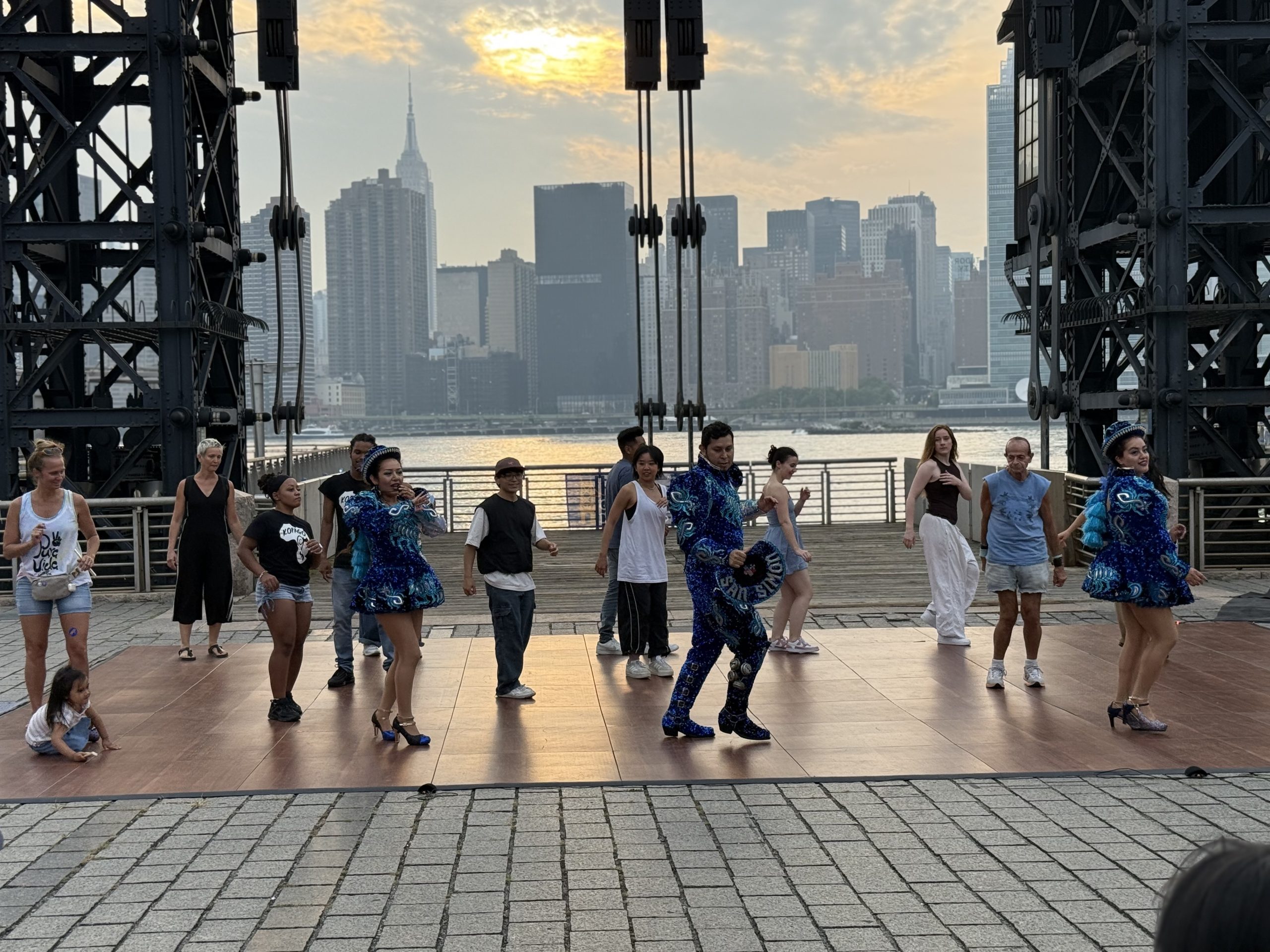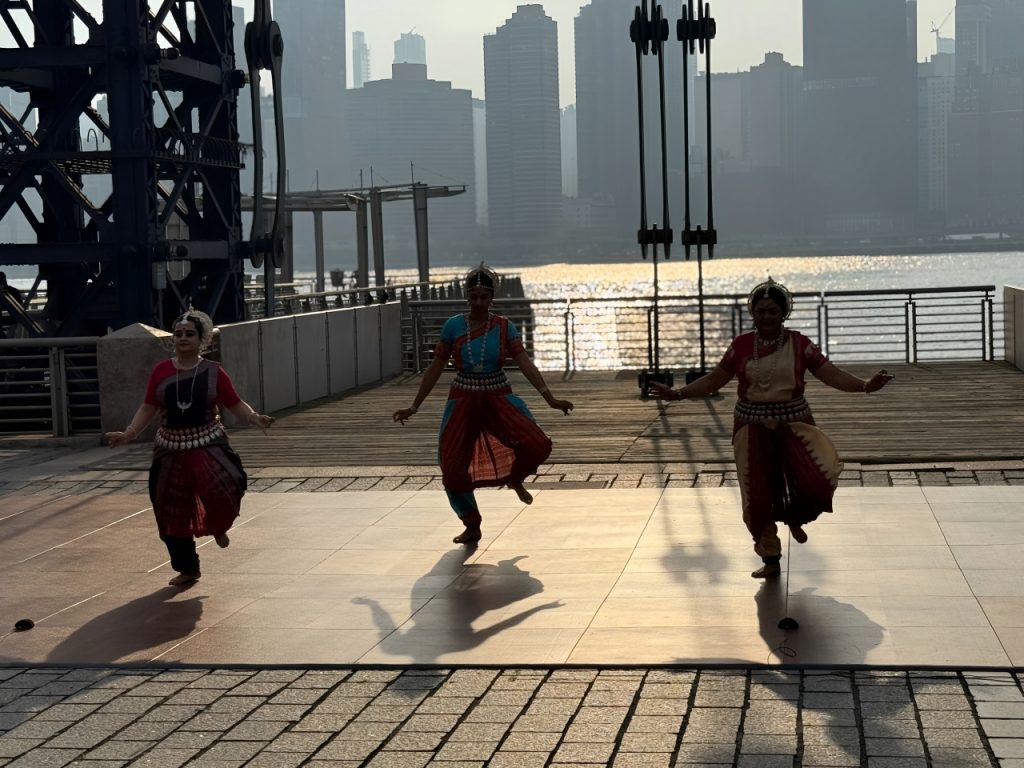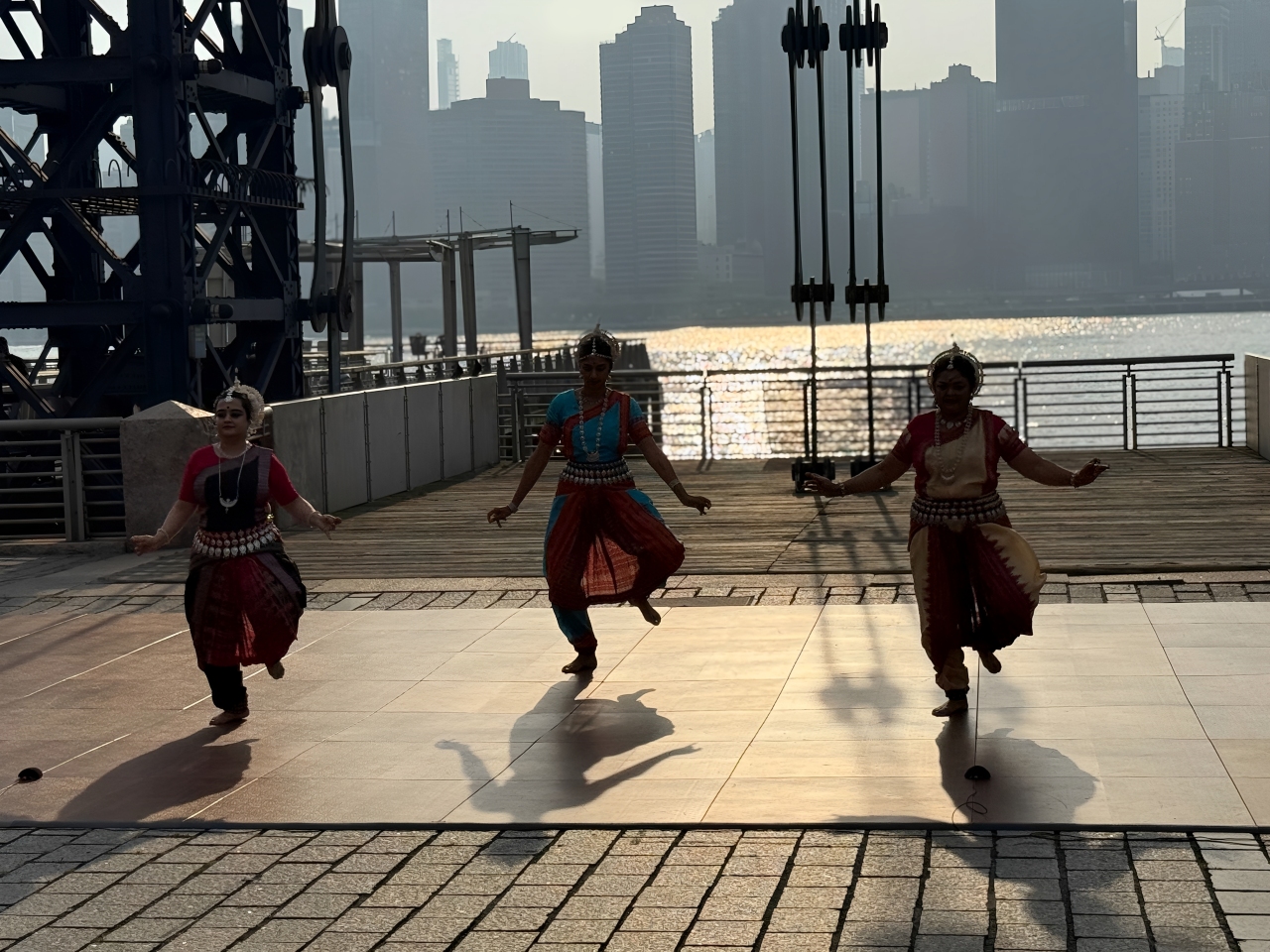
Queens Dances Together in Long Island City
By MOHAMED FARGHALY
mfarghaly@queensledger.com
With the Manhattan skyline glowing across the river, the Queens Boro Dance Festival turned Gantry Plaza State Park into a lively celebration of culture, rhythm, and community on July 26.
Now in its 11th season, the annual summer festival tours outdoor spaces across Queens, spotlighting only Queens-based dance companies. Saturday’s performance brought together six of the 21 groups participating in this year’s borough-wide tour, each one representing a different cultural corner of Queens.
“We’re very proud to be a platform that really tries to represent a cross section of the world’s borough, because we all know that we are the biggest and the best borough,” a representative announced to the crowd as the show began. “We’re so proud to be able to connect with our communities throughout the borough through dance.”
The lineup opened with Las Machas, a high-energy Bolivian Caporales piece performed by San Simon Sucre New York, a nonprofit based in Forest Hills. Dancers in vibrant costumes stepped and spun to the rhythm of “Ciudad Blanca” in a performance honoring Bolivia’s Sucre region.
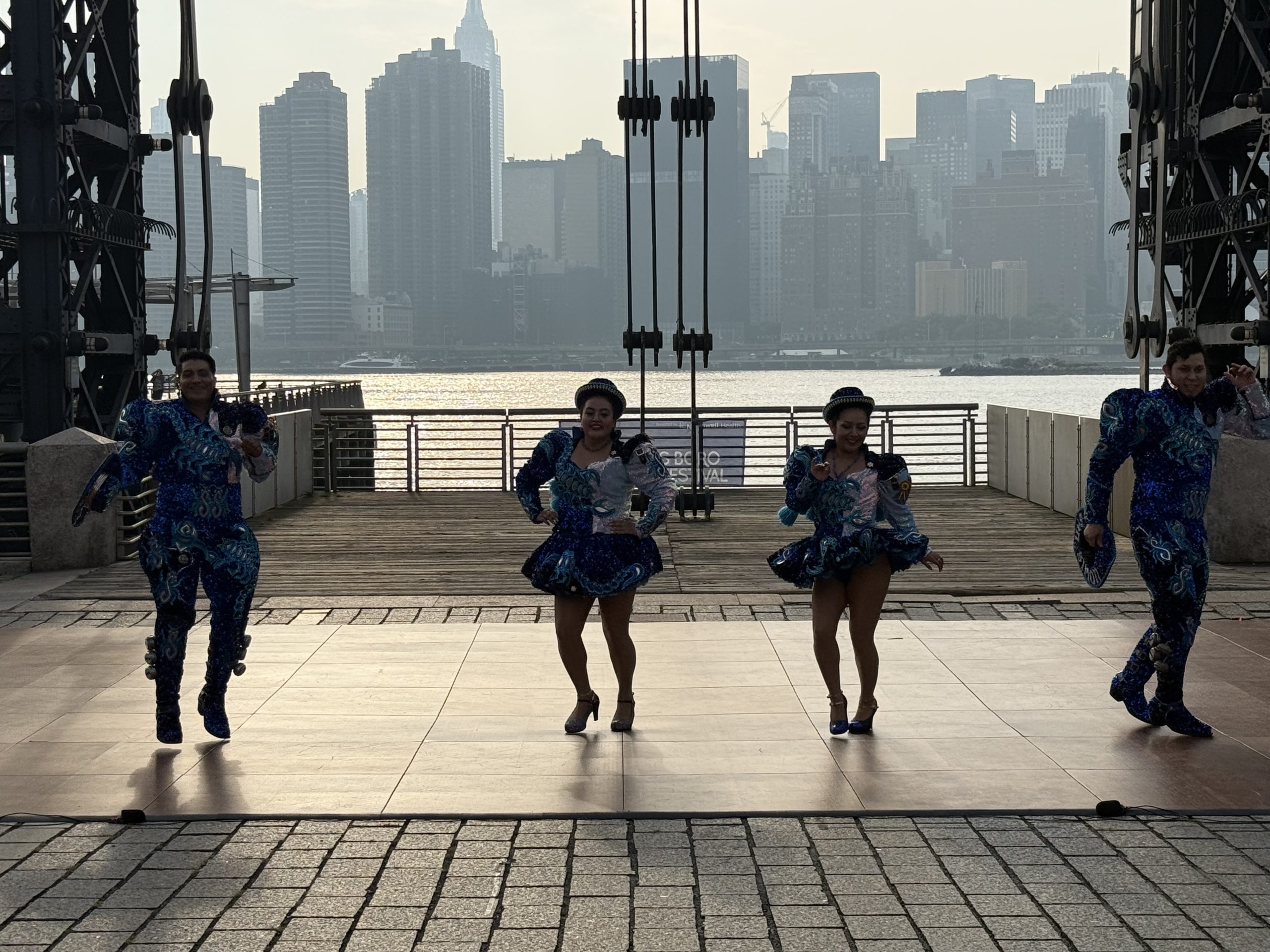
From Long Island City, Umami Playground Dance Inc. followed with XXXXS, a playful piece exploring how tight clothing affects movement. Blending street styles like popping and breaking with contemporary technique, the ensemble brought humor and spontaneity to the waterfront stage.
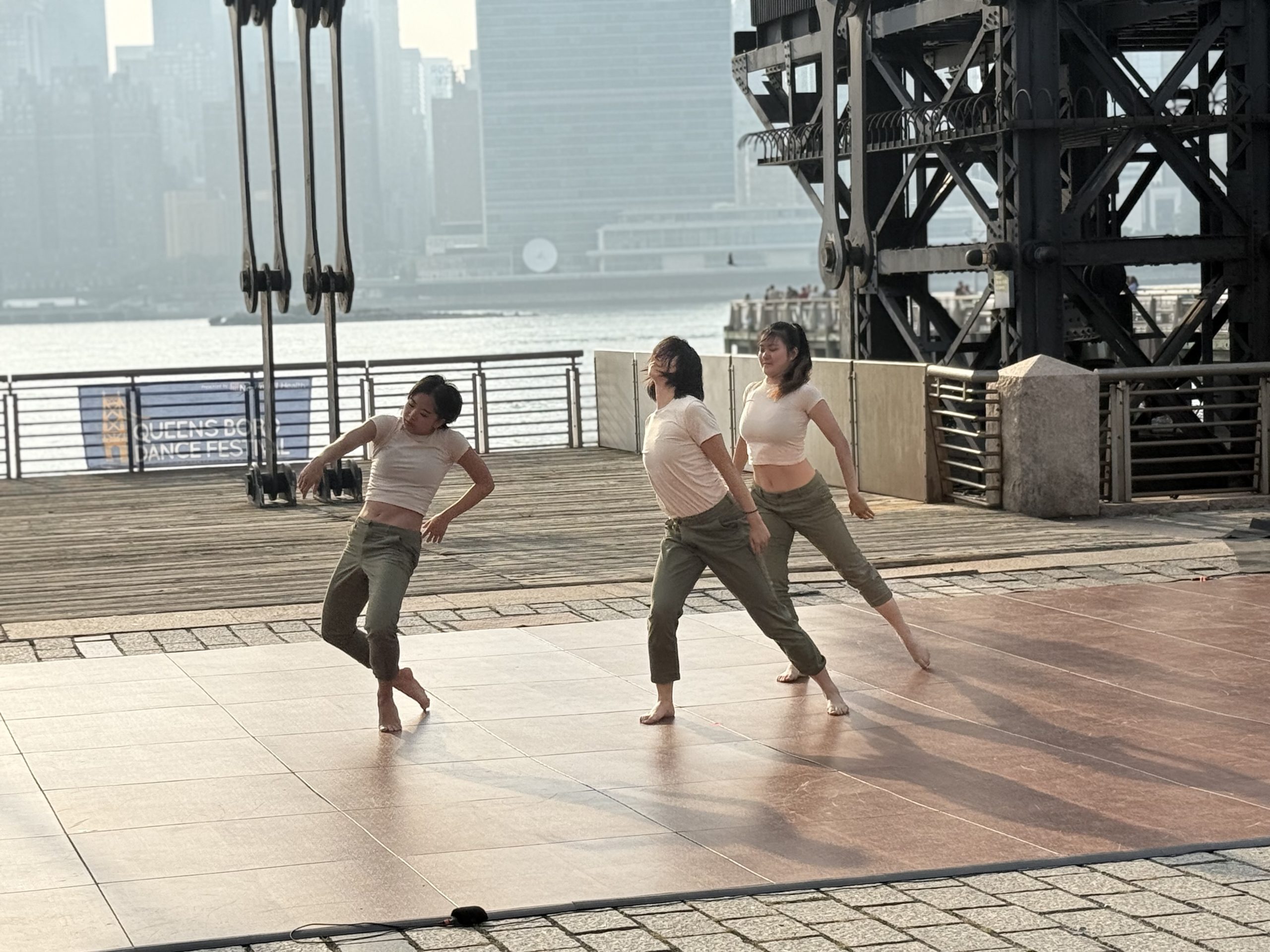
Mala’s Odissi, also from Forest Hills, offered a contrast with Battu Sandhya Tandava, a classical Indian dance rooted in ancient temple traditions. The choreography drew from traditional sculpturesque poses, connecting spirituality and movement with grace.
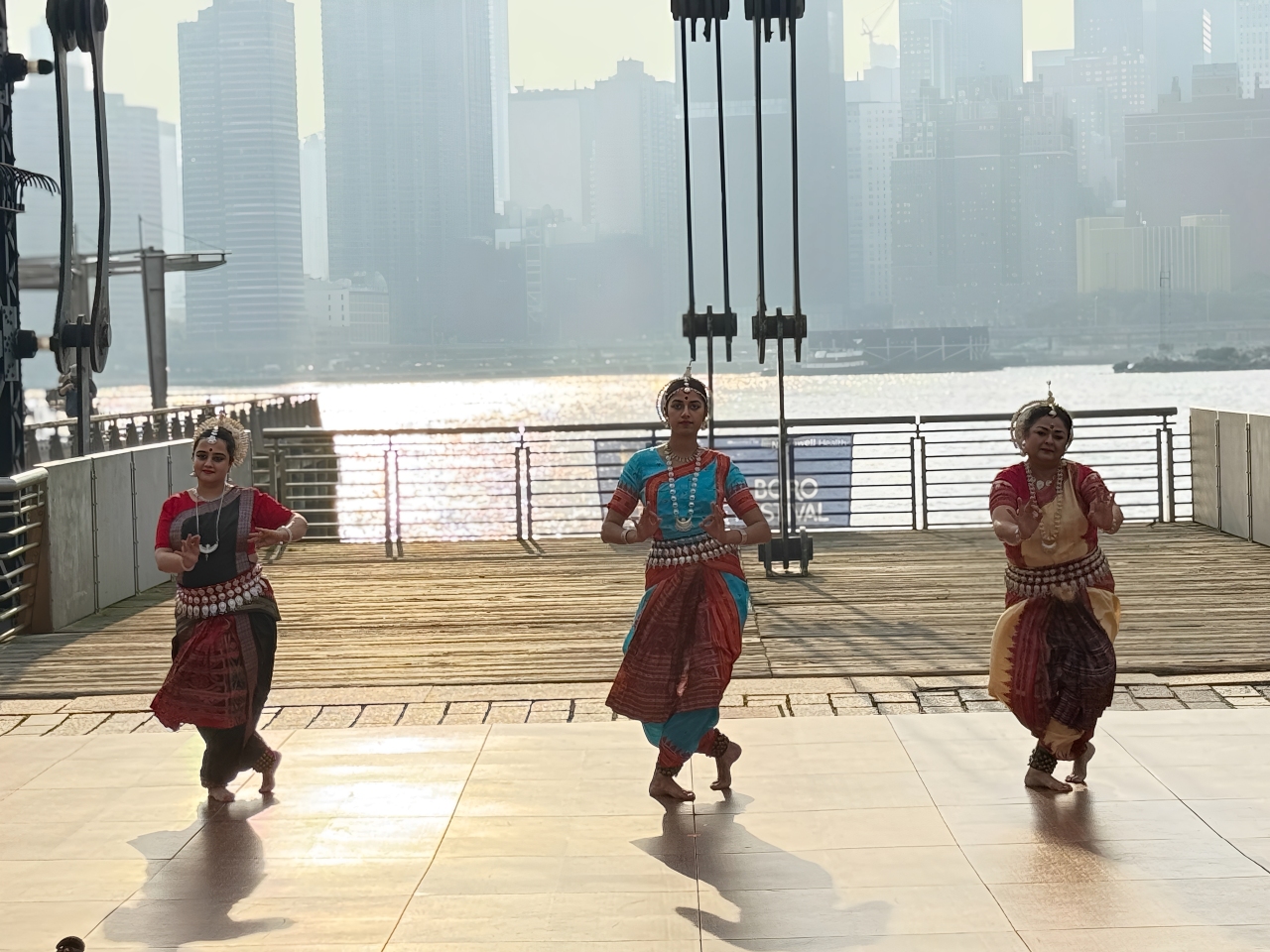
The tone shifted with Ridgewood-based VERBAL ANIMAL’s CONCRETE GULP, a raw and experimental work described as “an anarchist machine of resistance.” The piece leaned into collective power and sound as dancers moved in sharp, chaotic unison.
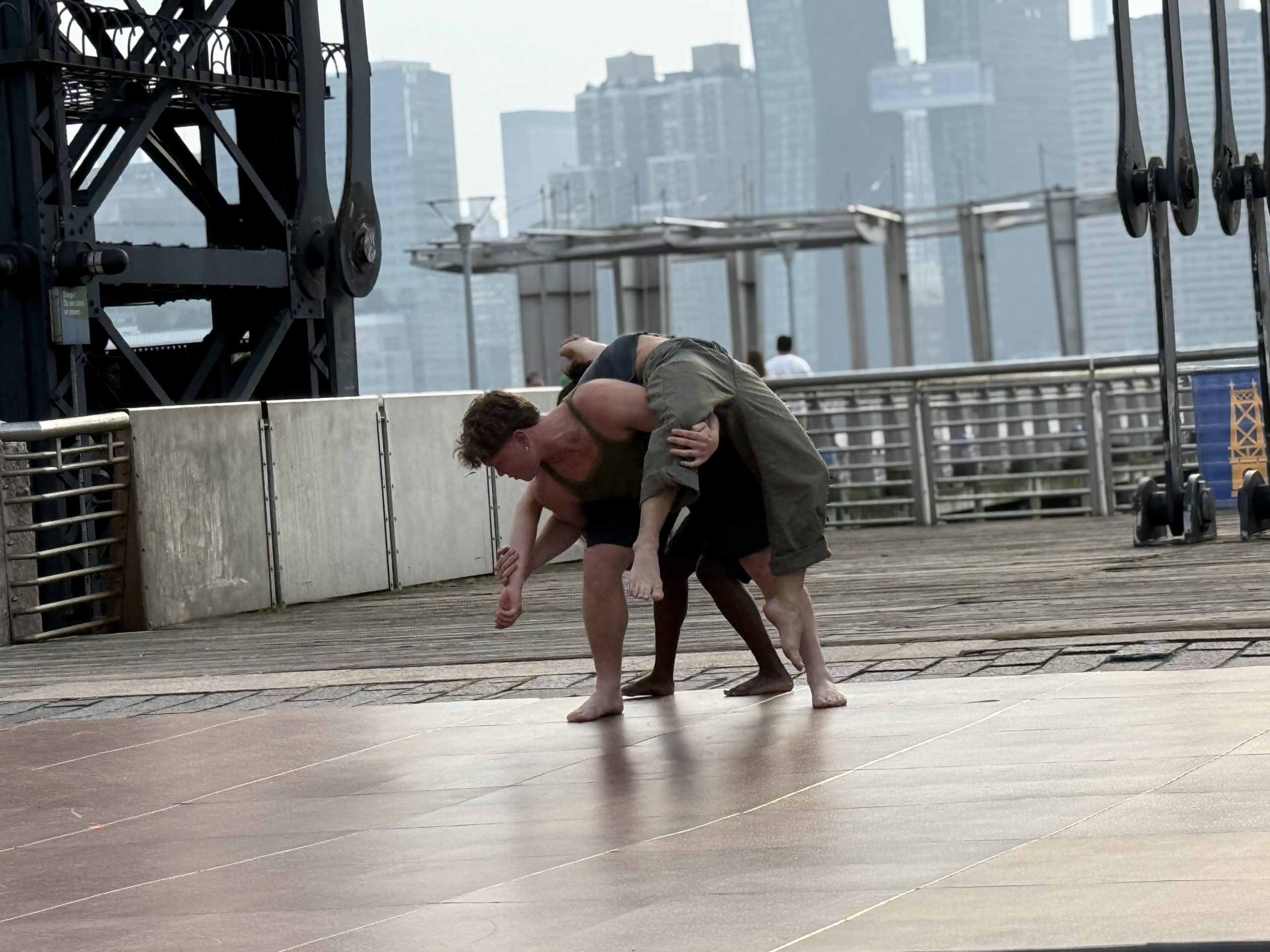
Astoria’s Saylit Dance Collective presented Women of the extraordinary, a personal and expressive blend of French jazz, Bolivian folklore, and hip-hop. Choreographer Litsie Monier, just 22, explored themes of femininity, vulnerability, and identity through movement.
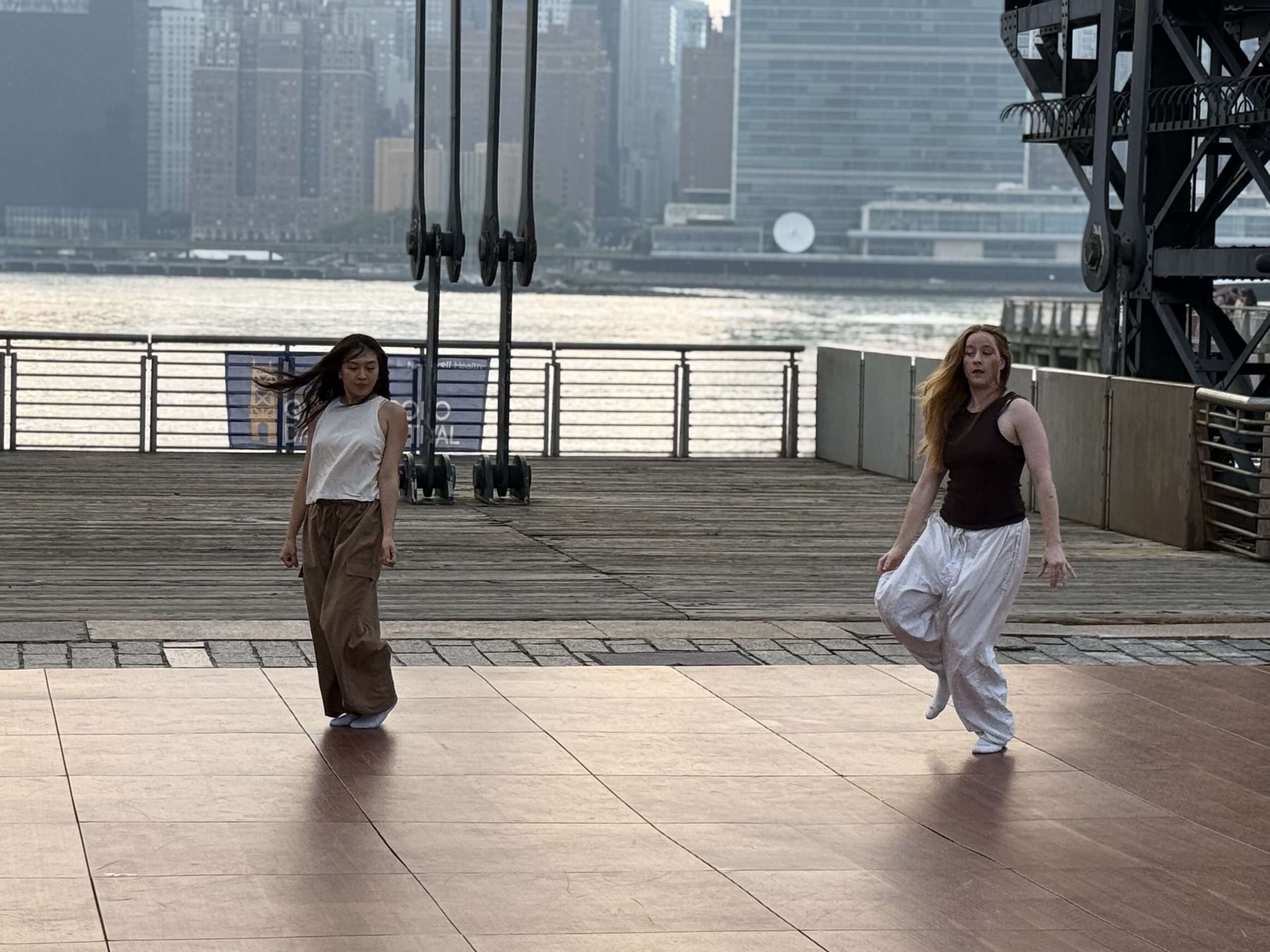
Closing the evening was Sabar Rek! by the Kofago Dance Ensemble, led by Senegalese choreographer Kevin McEwen. The joyful and powerful performance transported the audience to Dakar through traditional West African rhythms and dance, bringing the crowd to their feet.

After the final bows, dancers from San Simon Sucre and Kofago returned to lead a community “Danceback,” offering mini dance lessons as the sun set over the East River.
